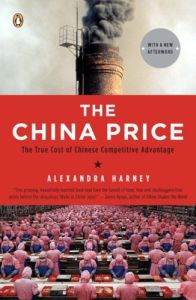
The China Price
The True Cost of Chinese Competitive Advantage
Recommendation
Shoppers know that the ubiquitous “Made in China” labels on everything from basic food and clothing to high-end electronics usually mean low prices. But most consumers don’t realize the full extent of the repercussions that the “China price” extracts from the Chinese and the rest of world. Journalist Alexandra Harney undertakes an in-depth investigation into what Chinese workers must endure to save the average American family $500 a year: low wages, crushingly long work days and brutal – sometimes deadly – working conditions. But she also reveals the hidden costs the world pays for the China price, including climate change, air pollution, unemployment and unsafe products. Harney gained unprecedented access to secret factories, workers’ homes and government offices to hear the personal, often chilling stories of what China’s economic boom has meant for millions of people. Although Harney’s argument ignores some mitigating factors, such as China’s right to industrialize and the good that growth in China has achieved, getAbstract strongly recommends reading this book before your next shopping trip: Reflect on what that “$3 T-shirt or $30 DVD” player really costs the world.
Summary
About the Author
Alexandra Harney is a journalist who has covered Asia for The Financial Times.







Comment on this summary